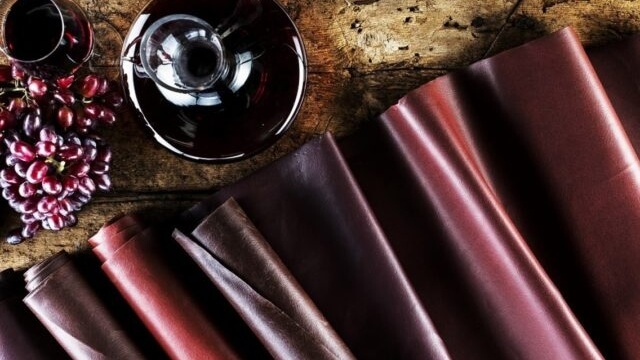Swedish fashion brand H&M has launched its new Conscious Collection, featuring vegan leather pieces made from the byproducts of wine.
The vegan leather alternative, created by Italian tech company Vegea—which H&M discovered in 2017 through its Global Change Awards—is featured on a number of H&M’s chain-strap handbags and several shoes. The eco-friendly collection will also feature a new dye made from coffee grounds in H&M’s offices in China, along with pieces made with recycled polyester materials.
“Going forward, we need to be using more bio-based materials and use more waste in our collection,” Pascal Brun, H&M’s sustainability manager, said to Vogue.
H&M’s new vegan “wine leather” bags and shoes go on sale worldwide on March 26.

H&M Embraces Eco-Fashion
H&M first debuted its Conscious Exclusive collection in 2019, shining a spotlight on several fashion-forward and sustainable materials. The collection featured pieces made from Piñatex vegan pineapple leather and Orange Fiber’s vegan citrus silk.
Fashion brands are making the move to prioritize sustainability and feature pieces made with eco-friendly fabrics. Everlane released vegan jackets made from recycled water bottles; Adidas strengthened its commitment to tackling plastic waste with the launch of its 100 percent recyclable sneakers.
According to a 2018 study conducted by Nielsen, 81 percent of people who participated in the survey felt strongly that the companies they shop should help to improve the environment.
Although creating pieces made from sustainable or recycled materials is an important step in the long run, Brun and Ann-Sofie Johansson, H&M’s creative advisor, agree that one of the biggest challenges is what becomes of the fashion giant’s garments once their consumers are finished wearing them.
“In 2020 and beyond, we need to take the concept of circularity to another level,” says Brun. “It’s the only way to think about our goals for natural resources [in the next decade].
Brun says it isn’t just about materials, it’s a more comprehensive and “holistic” approach. “it’s about how we can design clothes to last longer and to be eventually recycled, and how can we involve our customers to have more sustainable behavior.”
H&M’s ultimate goal is for 100 percent of its materials to be recycled or sustainably-sourced by 2030.



